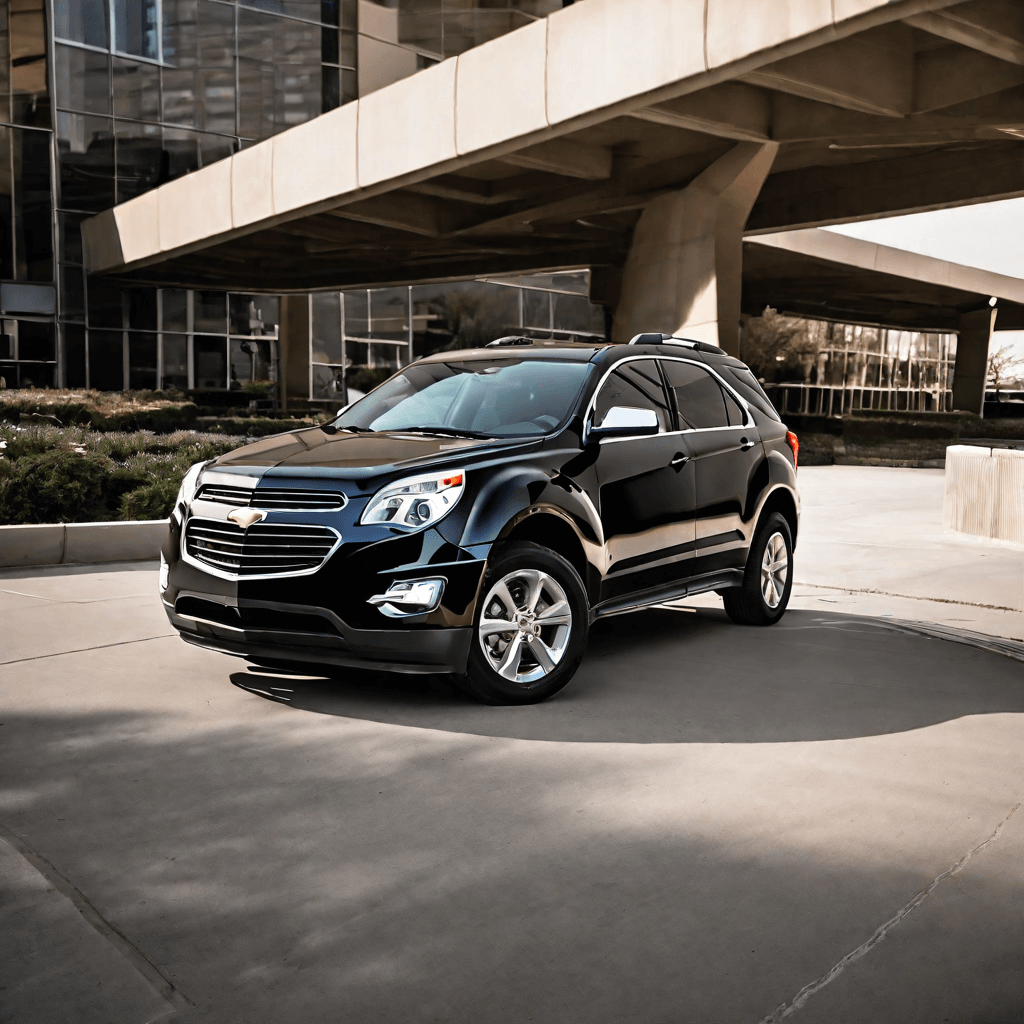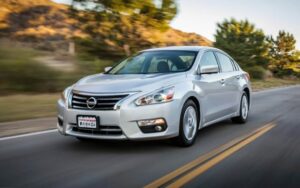How to Check and Adjust Your Chevy Equinox Tire Pressure
Are you a proud owner of a Chevrolet Equinox, or perhaps you’re considering becoming one? One of the most crucial aspects of vehicle maintenance that often goes unnoticed is tire pressure. Proper tire pressure is more than just a minor detail; it directly impacts your safety, fuel efficiency, and the overall performance of your Chevy Equinox. In this comprehensive guide, we’ll delve deep into the world of Chevy Equinox tire pressure, covering everything from why it’s crucial to how to maintain it for peak performance. So, fasten your seatbelt and get ready to explore the exciting world of Chevy Equinox tire pressure!
Proper Tire Pressure Matters More Than You Think!
Why Tire Pressure Is Crucial
Tire pressure might not be the most exciting aspect of car ownership, but it’s undoubtedly one of the most important. Maintaining the correct tire pressure is essential for several reasons:
- Safety: Adequate tire pressure ensures that your tires have optimal contact with the road, improving traction and stability, especially during adverse weather conditions.
- Fuel Efficiency: Under-inflated tires can lead to increased rolling resistance, which translates into lower fuel efficiency and higher fuel costs.
- Tire Longevity: Properly inflated tires wear more evenly, extending their lifespan and saving you money in the long run.
- Handling and Performance: Correct tire pressure enhances your vehicle’s handling and overall performance, making your driving experience more enjoyable.
Now that you understand the importance of tire pressure let’s explore why checking it regularly should be a top priority.


Why You Should Check Your Tire Pressure Regularly
Neglecting your tire pressure can have serious consequences, and it’s not something you should overlook. Here are a few reasons why regular tire pressure checks are a must:
- Safety First: Your safety on the road depends on the condition of your tires. Properly inflated tires can help prevent accidents, while under-inflated tires can lead to a blowout or loss of control.
- Save on Fuel Costs: When your tires are under-inflated, your vehicle has to work harder to move. This increased rolling resistance leads to decreased fuel efficiency and higher fuel bills.
- Extend Tire Life: Tires are a significant investment, and maintaining the right pressure ensures they last longer, saving you money in the long run.
- Optimal Performance: Properly inflated tires provide better handling, braking, and overall vehicle performance, enhancing your driving experience.
With that in mind, let’s dive into the specifics of tire pressure for Chevy Equinox by model year.
Tire Pressure Specs for Chevy Equinox by Model Year
Different Chevy Equinox models may have varying tire pressure recommendations. To ensure you’re maintaining the correct tire pressure for your specific vehicle, consult your owner’s manual or the label inside your driver’s door frame. However, here’s a general guideline to get you started:
- 2018-2022 Chevy Equinox: The recommended tire pressure for these models typically falls in the range of 33-35 PSI (pounds per square inch).
- 2013-2017 Chevy Equinox: These models generally have a recommended tire pressure of 30-35 PSI.
- 2010-2012 Chevy Equinox: For these models, you’ll often find a recommended tire pressure of 30-32 PSI.
It’s essential to check your specific model’s requirements and adjust accordingly. Proper tire pressure isn’t something you should guess, so always refer to your vehicle’s documentation for accurate figures.


Don’t Ignore the Tire Pressure Monitoring System!
In your Chevy Equinox, you have an essential ally in maintaining the correct tire pressure—the Tire Pressure Monitoring System (TPMS). This system alerts you when your tire pressure is too low, helping you stay safe on the road.
The TPMS in your Chevy Equinox works by monitoring the air pressure in each of your tires and sending a signal to the vehicle’s computer when it detects low pressure. This, in turn, triggers a warning light on your dashboard, indicating that you need to check your tire pressure.
While the TPMS is a valuable tool, it’s essential to understand its limitations. The TPMS may not detect gradual pressure loss, so it’s crucial to perform regular manual checks in addition to relying on the system’s alerts.
How to Reset the TPMS on Your Chevy Equinox
If you’ve recently inflated your tires to the recommended pressure, the TPMS warning light may still be illuminated on your dashboard. In this case, you’ll need to reset the TPMS. Here’s how to do it:
- Start Your Vehicle: Ensure your Chevy Equinox is in the “On” position, but don’t start the engine.
- Locate the Reset Button: On your dashboard, look for the reset button. It’s typically found near the steering column or under the dash.
- Press and Hold: Press and hold the reset button until the TPMS light blinks three times. This usually takes about 12-15 seconds.
- Release the Button: Let go of the reset button after the light blinks, and wait for it to stay on for a few seconds before turning off.
- Turn Off the Ignition: Finally, turn off your Chevy Equinox’s ignition and start it again to ensure the TPMS light no longer appears.


A Comprehensive Overview of Recommended Tire Pressure for Chevy Equinox
Maintaining the recommended tire pressure for Chevy Equinox is crucial for a smooth and safe ride. The manufacturer’s guidelines typically suggest a tire pressure of around 32 to 35 PSI (pounds per square inch) for the Chevy Equinox, but it’s always wise to double-check your specific model’s manual for precise figures. Proper tire pressure ensures optimal traction, fuel efficiency, and overall vehicle performance. Overinflated tires can result in a harsher ride, decreased road grip, and uneven tire wear.
On the other hand, underinflated tires can lead to reduced fuel economy, poor handling, and an increased risk of blowouts. Regularly monitoring and adjusting your tire pressure, especially before long trips or changes in weather, can help extend the lifespan of your tires and maintain your Equinox’s peak performance. So, take a few minutes to check and adjust your tire pressure to keep your Chevy Equinox running smoothly and safely down the road.
How to Chevy Equinox Tire Pressure Sensor Reset
If you’re a proud owner of a Chevy Equinox, you probably already know that keeping your tires at the right pressure is crucial for a smooth and safe ride. However, there might come a time when you need to perform a Chevy Equinox tire pressure sensor reset, and that’s where we’ve got your back! Resetting the tire pressure sensors in your Equinox is easier than you might think. First, locate the TPMS reset button, which is usually found below the steering wheel or in the glove compartment. With the ignition in the “On” position, press and hold this button until the TPMS light blinks three times. This indicates that your Equinox is in TPMS reset mode.
Now comes the fun part – adding air to your tires to ensure they’re at the correct pressure levels. Consult your owner’s manual or the sticker inside the driver’s door jamb for the recommended PSI. Once you’ve inflated the tires to the specified levels, drive your Chevy Equinox for about 10 minutes to allow the sensors to relearn the new pressure readings. As you cruise along, the TPMS light will reset, and you can breathe a sigh of relief knowing that your tires are properly calibrated.
So, don’t fret if you need to perform a Chevy Equinox tire pressure sensor reset – it’s a quick and easy process that ensures your ride remains safe and smooth. Keep an eye on your tire pressure regularly to avoid any hiccups on the road, and remember that a well-maintained Equinox is a happy Equinox!
What that Annoying Low Tire Pressure Light Means
As a Chevy Equinox owner, you’ve likely encountered the dreaded low tire pressure warning light on your dashboard at some point. But do you know what it means and why it’s essential not to ignore it?
When the TPMS detects low tire pressure, it triggers the warning light on your dashboard. This light usually looks like an exclamation mark inside a horseshoe-shaped tire. Here’s what it’s trying to tell you:
- Low Tire Pressure: The most obvious message is that one or more of your tires have low pressure. This could be due to a slow leak or a sudden drop in pressure.
- Potential Hazard: Ignoring the warning light can put your safety at risk. Under-inflated tires can lead to poor traction, reduced stability, and the risk of a blowout.
- Fuel Efficiency: Driving with under-inflated tires can significantly reduce fuel efficiency, costing you more at the pump.
- Tire Wear: It can also result in uneven tire wear, leading to the need for premature tire replacement.
In short, that annoying low tire pressure light is your vehicle’s way of saying, “Pay attention to your tires; they need some care!” Let’s delve deeper into what the ideal tire pressure is for your Chevy Equinox.


What’s the Ideal Tire Pressure for Your Chevy Equinox?
Maintaining the ideal tire pressure for your Chevy Equinox is essential for optimal performance and safety. The ideal tire pressure can vary depending on factors such as your vehicle’s model year, the type of tires you’re using, and the load you’re carrying. However, a general guideline for Chevy Equinox models is around 33-35 PSI.
To get the most accurate information for your specific vehicle, refer to your owner’s manual or the label inside the driver’s door frame. This label often provides information about the recommended tire pressure for both the front and rear tires.
Too Low Pressure Causes More Than Just Flat Tires!
While a flat tire is the most obvious consequence of low tire pressure, there are other problems that can arise when your tires aren’t properly inflated. Let’s explore some of the additional issues that can occur when your tire pressure is too low:
Improper Pressure Leads to Uneven Tread Wear
When your tires are under-inflated, the weight of your vehicle isn’t evenly distributed across the tire’s surface. This can lead to uneven tread wear, meaning that certain parts of the tire wear out faster than others. Uneven tread wear affects your tire’s lifespan and can lead to reduced traction and handling.
To avoid this, it’s essential to maintain the recommended tire pressure, ensuring that your tires wear evenly and last longer. This not only saves you money on premature tire replacement but also enhances your vehicle’s overall performance.
Save Gas By Keeping Tires Properly Inflated
Do you cringe every time you visit the gas station and watch your hard-earned money flow into your gas tank? If so, you’ll be interested to know that maintaining the correct tire pressure can help you save on fuel costs.
Under-inflated tires increase rolling resistance, which means your vehicle has to work harder to move. This extra effort results in decreased fuel efficiency and higher gas consumption. In contrast, properly inflated tires reduce rolling resistance and improve fuel efficiency, saving you money on each tank of gas.
So, if you want to keep more cash in your pocket and spend less time at the pump, make sure your Chevy Equinox’s tires are always at the right pressure.
It’s Quick and Easy to Check Your Tire Pressure
Checking your Chevy Equinox’s tire pressure might sound like a daunting task, but it’s actually a quick and straightforward process. Here’s how to do it:
- Gather Your Tools: You’ll need a tire pressure gauge. If you don’t have one, they are readily available at most auto parts stores or online.
- Check When Cold: For the most accurate reading, check your tire pressure when the tires are cold. This means you should do it before driving or at least three hours after you’ve driven.
- Locate the Valve Stem: Each tire has a valve stem, often covered by a small cap. Remove the cap.
- Use the Gauge: Press the gauge onto the valve stem to measure the air pressure. It’s important to hold the gauge firmly to ensure an accurate reading.
- Compare with Recommended Pressure: Consult your owner’s manual or the label inside the driver’s door frame for the recommended tire pressure. Compare this with the reading on your gauge.
- Adjust as Necessary: If the pressure is too low, add air until it reaches the recommended level. If it’s too high, release some air until you achieve the correct pressure.
- Replace the Cap: After adjusting the tire pressure, don’t forget to put the valve cap back on to protect the valve from dirt and moisture.
Checking your tire pressure regularly, ideally at least once a month, is a small investment of time that can yield significant returns in safety, fuel savings, and tire longevity.
Tips for Maintaining Optimal Tire Pressure
Maintaining proper tire pressure doesn’t have to be a chore. Here are some tips to make it a breeze:
Keep Your Tires in Top Shape With Regular Checks
Regular tire maintenance is key to keeping your Chevy Equinox’s tires in top shape. Here’s what you can do to ensure they stay in great condition:
- Monthly Checks: Make it a habit to check your tire pressure at least once a month. Consistency is key to maintaining optimal pressure.
- Check Before Long Trips: Before embarking on a long journey, double-check your tire pressure to ensure a safe and efficient trip.
- Monitor Seasonal Changes: Temperature fluctuations can affect tire pressure. As the seasons change, be attentive to any fluctuations in tire pressure and adjust accordingly.
- Tire Rotation: During routine maintenance, consider rotating your tires. This can help ensure even wear and prolong their lifespan.
- Inspect for Damage: Regularly inspect your tires for signs of damage, such as punctures, cuts, or bulges. Address any issues promptly to avoid safety hazards.
- Alignment and Balance: Maintain proper wheel alignment and balance to prevent uneven wear on your tires.
Psst! Here’s When to Check Your Tire Pressure
To maintain optimal tire pressure, it’s crucial to know when to check your tires. Here are some key times to keep in mind:
- Seasonal Changes: Temperature fluctuations between seasons can cause tire pressure to vary. Check your tire pressure when transitioning from hot to cold or vice versa.
- After Hitting a Pothole: If you’ve had a rough encounter with a pothole or other road hazards, it’s a good idea to check your tire pressure afterward.
- Long Trips: Before setting off on a long journey, check your tire pressure to ensure a safe and comfortable ride.
- Every Month: As a general rule of thumb, make it a monthly habit to check your tire pressure. This regularity helps catch issues early and ensures consistent performance.
Stay Safe on the Road With Properly Inflated Tires
Your Chevy Equinox is more than just a vehicle; it’s a trusted companion that takes you on adventures, helps you run errands, and keeps you and your loved ones safe on the road. By maintaining the right tire pressure, you’re not only ensuring your safety but also enhancing your vehicle’s performance and efficiency.
So, whether you’re driving through urban streets or embarking on a cross-country road trip, remember that your tire pressure plays a crucial role in the overall driving experience. Stay vigilant, make tire pressure checks a regular part of your routine, and enjoy the many benefits of a well-maintained Chevy Equinox.
In conclusion, Chevy Equinox tire pressure is a critical aspect of vehicle maintenance that should not be underestimated. It affects your safety, fuel efficiency, and the lifespan of your tires, among other things. By regularly checking and maintaining the correct tire pressure for your specific model year, you can enjoy a safer, more cost-effective, and enjoyable driving experience in your Chevy Equinox. So, keep your tires properly inflated, stay safe on the road, and make the most of your beloved vehicle. Happy driving!
10 FAQ Chevy Equinox Tire Pressure
1. What is the recommended tire pressure for a Chevy Equinox?
The recommended tire pressure for a Chevy Equinox depends on your particular model and year. The owner’s manual should provide an accurate recommendation, or else you can consult the manufacturer’s website to find out more information.
2. How often should I check my Chevy Equinox tire pressure?
It is recommended to check your Chevy Equinox tire pressure every month, or whenever you are about to embark on a long journey. Also, take into account any changes in the weather and consider inflating or deflating as necessary.
3. How can I tell when my tires need air?
If you notice that your tires are looking flat or they feel squishy when you press down on them, then it’s time to add some air. It is important to check the tire pressure periodically in order to avoid any issues while driving.
4. What kind of impact do underinflated tires have on my Chevy Equinox?
Underinflated tires can have a significant impact on your Chevy Equinox. Not only will you experience reduced fuel economy, but it can also increase the wear and tear on the tires, as well as put strain on the suspension and steering system of your vehicle. Additionally, underinflated tires may lead to tire blowouts or other accidents if they are driven in that condition for an extended period of time. Therefore, it is important to check your tire pressure regularly and inflate them when necessary. By keeping your tires properly inflated, you can ensure that your Chevy Equinox is running safely and efficiently.
5. What is the recommended tire pressure for my Chevy Equinox?
The recommended tire pressure for your Chevy Equinox will depend on the size of your tires. You can typically find this information in the owner’s manual or on the sticker inside the driver’s side door jamb. Additionally, you may also be able to find




